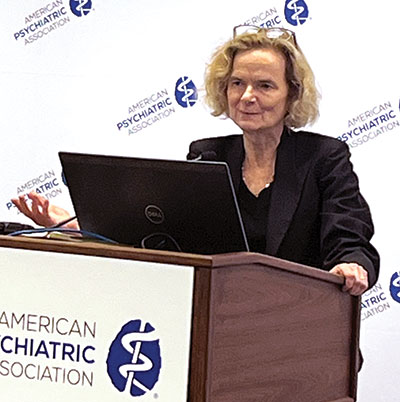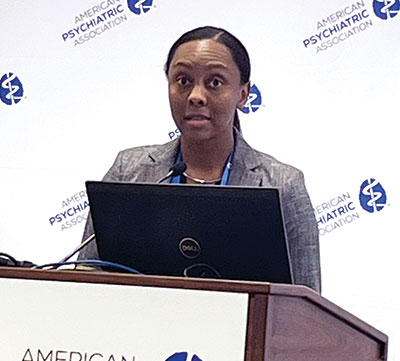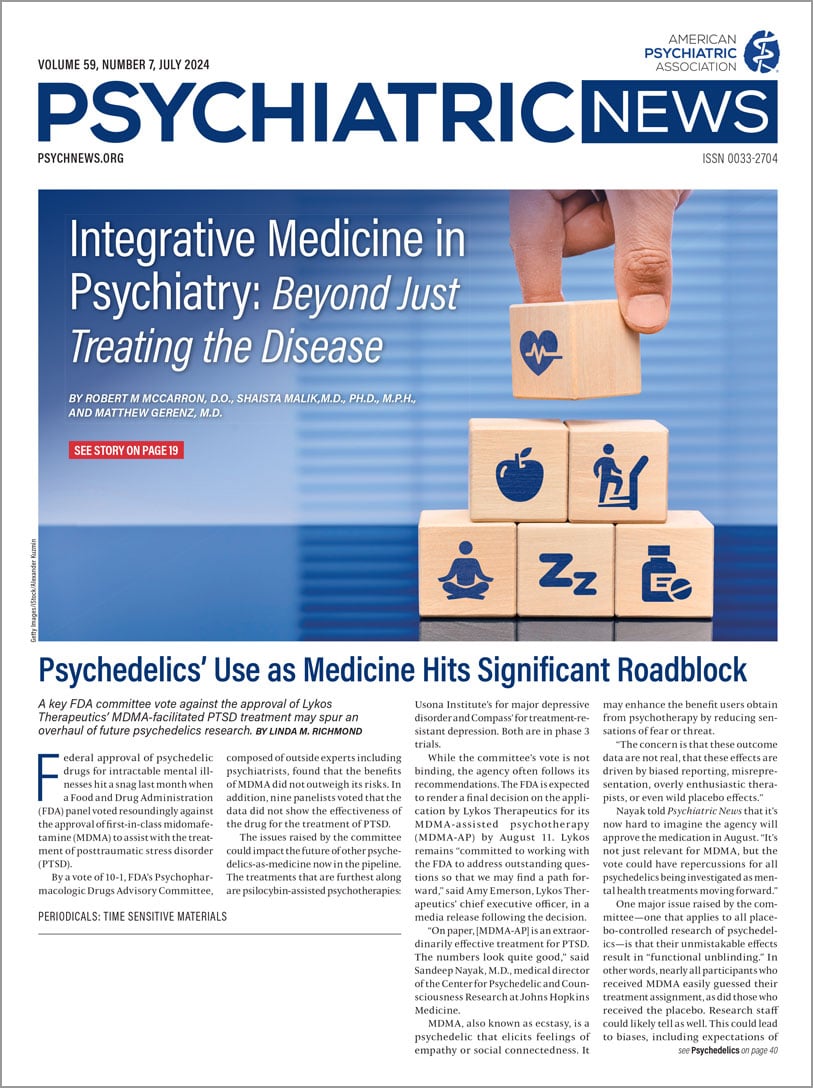Sociodemographic variables—such as a history of detention or suspension from school and prenatal exposure to alcohol—are the most powerful predictors of adolescent substance use, more powerful than brain imaging results, according to research published in The American Journal of Psychiatry (AJP).
At a press conference during APA’s 2024 Annual Meeting, lead author ReJoyce Green, Ph.D., an assistant professor at the Medical University of South Carolina, said the results suggest that for preteen and teenage children, resource-intensive efforts such as collecting hormonal, neurocognitive, and neuroimaging data do not improve the ability to predict substance use over more easily accessible sociodemographic and familial information. Addressing modifiable risk factors—especially use of alcohol and other substances during pregnancy—should be a part of prevention and early intervention efforts, she said.
The papers are part of a special AJP edition on substance use disorders, in keeping with the theme chosen by outgoing APA President Petros Levounis, M.D., M.A., for his presidential year and the meeting: “Confronting Addiction From Prevention to Recovery.”
Green and colleagues analyzed the effect of 420 variables—sociodemographic, hormonal, neurocognitive, and neuroimaging—on initiation of substance use among more than 6,800 youth (aged 9 and 10) enrolled in the Adolescent Brain Cognitive Development Study. They followed the youth for three years. Initiation of use of any substance included taking even a sip of alcohol, what Green called “the first touch.”
By age 12, approximately 14.4% of the youth had initiated substance use; the most commonly reported substances were alcohol, cannabis, and nicotine. Prenatal exposure to substance use was among the top predictors, along with a history of school detention and suspension. Several modifiable risk factors also predicted greater likelihood of substance use initiation, including substance availability, peer use of alcohol and nicotine, and sensation seeking (need for varied, novel, and complex sensations and experiences), according to the study.
Addressing cannabis use, Hurd emphasized the greatly increased potency of many cannabis products available to young people today and the risk that is posed to developing brains, especially in young people at risk for psychosis. She said that in past years, concentrations of tetrahydrocannabinol (THC), the psychoactive substance in cannabis, were between 2% and 4%; today they are between 15% and more than 24%. Moreover, “the cannabis plant contains over 500 terpenes and other chemicals that we still have no clue about [regarding] their biological action.”
“In psychiatry, we think about the diagnosis of cannabis use disorder in adulthood, but we know that most psychiatric disorders have a developmental origin, so adolescent exposure to cannabis is very important,” Hurd said. She added that cannabis affects synaptic connections in the brain and decision-making.
The relationship between use of high-potency cannabis and increased risk of cannabis use disorder and other psychiatric disorders “must be taken seriously, especially in light of the current mental health crisis,” wrote Hurd and co-authors Jesse Hinckley, M.D., Ph.D., and Jacqueline-Marie N. Ferland, Ph.D. “The plasticity of the developing brain offers windows of opportunity for prevention and early intervention to change that trajectory.”
In her article, Volkow noted the 50th anniversary of NIDA while acknowledging how much more still needs to be done to understand and treat addiction. “When I look back at 50 years of NIDA research, I am stunned at how far the science of addiction has advanced and uat the contributions NIDA-supported researchers have made. When the institute was founded, our scientific field was in its infancy. ... Over the intervening decades, our understanding of the pharmacology of drugs and the neurotransmitter systems mediating their effects has vastly increased.”
At the press conference, Volkow said, “I am very optimistic about the future, but we are struggling with one of the most difficult problems we have ever faced in the opioid overdose crisis. Our biggest challenge remains the stigma about addiction.”
She said the greatest opportunity lies in the application of data science to addiction research. In her paper she wrote: “Increasingly large data sets and powerful computational tools and algorithms are enabling us to move from very focused, simplified scientific questions toward ever-more comprehensive and dynamic ones.” ■


